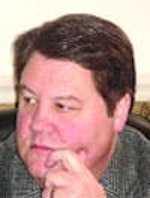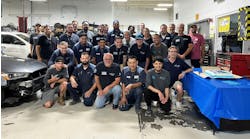In our industry we do seem to have a number of sacred cows plaguing our future improvement both in our businesses and in our industry. In lean/Kaizen one of the most important steps for improvement is to be able to envision the future state. This can be almost impossible if you have a minefield of sacred cows in your way. To make improvements you must be able to sacrifice the cows that hinder your progress. One such obstacle in our industry includes the entire system in which we estimate damages – the flat rate system.
We are now often submitting inquiries in regards to the times listed in various estimating systems utilizing the Database Enhanced Gateway (DEG) to address the inaccuracies and omissions of these systems. We have consistently found that at best the times listed are a guess, and time studies are as rare as water in the desert. So what is the solution?
While I was in Australia several times in the early 2000s, their industry was wrestling with the similar flat rate issue. Their slogan, "Funny Times ... Funny Money" was bringing to light how bad this system really is. There was lots of talking, but little doing until, "Real Time ... Real Money" was rolled out by Motor Trades Association and Insurance Australia Group in October 2007. This was a major departure from what was common place for decades.
It is unfortunate that many in the industry may not know the difference between the two systems. In our flat rate system the times listed in the estimating guides are for an average technician with average tools working on "undamaged" and/or "non-corroded" vehicles. This is where understanding the procedure pages (P-Pages) and being allowed to use them is so important when writing an accurate estimate of damages. The judgment times to repair a panel are of course not listed in the estimating guides and were generally based on a relationship between actual hours required and the labor rate of the market area.
For years, it was the goal of a technician to beat the flat rate times as much as possible to produce enough flat rate hours/dollars each week to make a good living. The hours or dollars estimated were never based (or intended) on real time due to the labor rates being used or controlled in the market place. However, over the last 10 years the judgment times have moved closer to real time, repair operations have had limits placed on them, and flat rate times for replacement/refinish operations have decreased, but the labor rates have not adjusted accordingly. Isn't it time to shoot this sacred cow?
Real Time ... Real Money can eliminate these tough issues. In Australia, each shop submitted their labor rates to the insurers for their review. They were to be based on real costs to do business including rent, equipment, certifications and efficiencies. The new labor times are based on highly qualified technicians using newer efficient equipment. Shop labor rates typically ranged from $60 to $94 with yearly reviews. Talking with a shop owner friend of mine, it has increased to $85 to $110 per hour.
If there is a disagreement to what the judgment time should be – such as the shop estimates six hours to repair the panel and the insurer says it should be 3.5 – they put a video camera on during the panel repair and it will be paid accordingly. This sounds too easy to be true, but it is not.
The most important point is to ask the tough questions about anything and everything whether it is your business sacred cows or the entire industry's sacred cows. Sometimes you may have to shoot the cow to make the changes that need to be made. Continue to imagine the future state as it needs to be, and not what you think it is allowed to be – and we will be much better off in the long run.
Contact info: [email protected]



